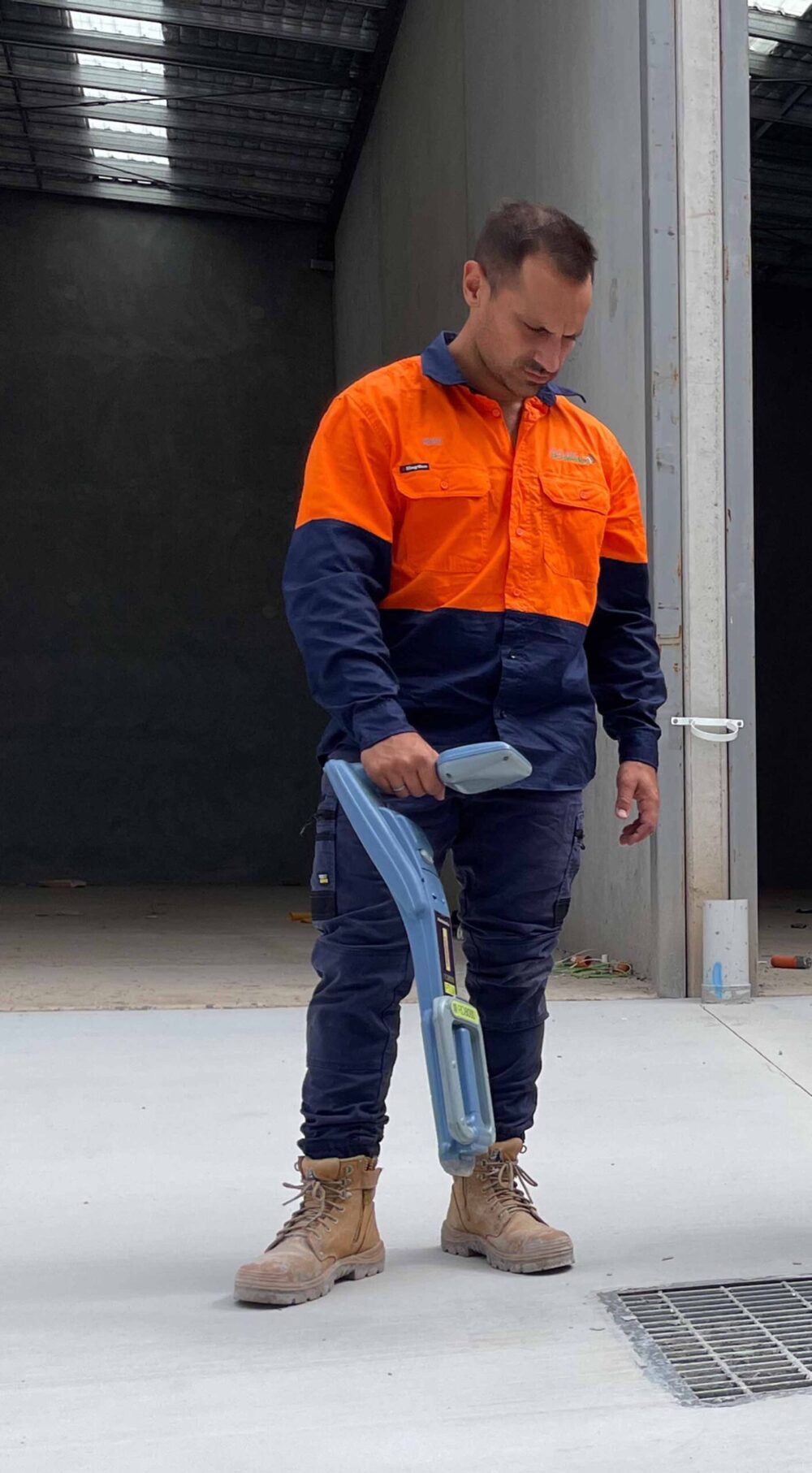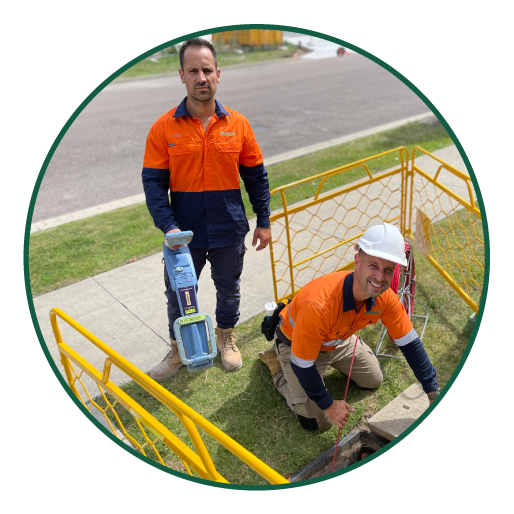CONCRETE RADAR
Choosing us for your concrete radar needs ensures that you receive the highest quality service and expertise available in the industry. Our team consists of seasoned professionals who utilise the latest technology to deliver precise and reliable results. We pride ourselves on our attention to detail, ensuring that every project is completed to the highest standards of accuracy and efficiency. Moreover, our customer-centric approach guarantees that we understand and meet your specific requirements, providing customised solutions that cater to your unique challenges. Trust us to deliver exceptional service and peace of mind for all your concrete radar projects.
Have you ever wished that there was a way to see what's going on beneath your feet without having to tear through the concrete? Well, wish no more. Concrete Radar is here to revolutionise the construction industry with its groundbreaking technology and state-of-the-art scanning equipment. By using radar pulses, you can provide detailed images of any insulation or wiring in your concrete slabs – giving you peace of mind knowing that everything underfoot is safe. Keep reading to learn more about how this amazing tool can potentially save you time and money!
Concrete Radar, What Is It?
Concrete radar is an innovative technology that is used to examine the subsurface of concrete structures. It is a non-destructive testing technique that utilises electromagnetic waves to determine the structural integrity of concrete elements. The system works by transmitting high-frequency radio signals through the test object, which then bounces back to the receiving antennae. By analysing the signal, the system can detect the presence and location of reinforcing steel, cracks, voids, and other anomalies within the concrete. This information allows engineers to evaluate the condition of the structure and perform necessary repairs and maintenance. Concrete radar is a valuable tool for ensuring the long-term safety and durability of concrete structures. It is also cost-effective and helps to minimise disruption to the surrounding environment. With its ability to provide accurate and detailed information about the inner workings of concrete, concrete radar is an important asset to the construction industry.
Benefits of Concrete Radar
Accurate detection of possible damages: Concrete radar technology allows you to detect any possible damages to their building foundation, such as cracks, voids, and faults, which could affect the stability and safety of their property and operations.
Non-invasive inspections: Unlike traditional methods of inspecting concrete structures, which may require drilling and probing, concrete radar is a non-invasive technique that uses electromagnetic waves to scan and map the interior of concrete walls, floors, and slabs. This means that you can avoid causing any unnecessary damage to their building while ensuring the accuracy of their inspections.
Time-saving and cost-effective: By using concrete radar technology, you can save time and money on inspections and repairs. Concrete radar can rapidly scan large areas of concrete structures and locate any potential problems or areas of weakness, eliminating the need for costly and time-consuming manual inspections.
Improved safety: Detecting and repairing any damages or structural weaknesses present in their building foundation can greatly improve the safety of staff and customers alike. Concrete radar technology helps identify any potential hazards early on, therefore allowing people to take action and prevent accidents before they occur.
Long-term benefits: Investing in the use of concrete radar technology can have long-term benefits. By regularly conducting inspections and maintaining their concrete structure, they can extend the lifespan of their building, save money on repairs in the long run, and ensure the safety of their operations for years to come.

Some Trades That May Find Concrete Radar Beneficial
Civil Engineers
Concrete Radar can assist civil engineers in determining the thickness of concrete, identifying potential areas of weakness or damage, and locating rebar and other embedded objects.
Construction Workers
Concrete Radar can help construction workers ensure that concrete is poured to the correct thickness and strength, reducing the risk of structural failure and the need for costly repairs.
Building Inspectors
Concrete Radar can supplement traditional visual inspections by providing detailed information on the condition of concrete structures, helping inspectors identify potential issues before they become major problems.
Architects
Concrete Radar can aid architects in designing structures that are both aesthetically pleasing and structurally sound by providing detailed information on the composition and strength of concrete.
Maintenance Technicians
Concrete Radar can be used to monitor the condition of concrete structures over time, detecting any changes or deterioration that may require maintenance or repair.
Geotechnical Engineers
Concrete Radar can help geotechnical engineers evaluate the subsurface conditions of sites where concrete structures will be built, including identifying potentially problematic soil types or buried objects.
Concrete Suppliers
Concrete Radar can ensure that concrete suppliers are providing materials that meet the required specifications and standards, reducing the risk of defects and failures in finished structures.
Government Regulators
Concrete Radar can assist government regulators in ensuring that concrete structures are built to code and are safe for public use, reducing the risk of liability and protecting public safety.
How Safe Is Concrete Radar?
Concrete radar scanning technology has been used for many years and is considered a safe and reliable way to inspect and analyse concrete structures. While some people may have concerns about the safety of concrete radar, it is essential to understand that the technology is entirely safe and poses no health risks. Concrete radar uses low-level electromagnetic waves that do not generate any ionising radiation, making it a non-invasive and non-destructive method for inspecting concrete structures. Moreover, as the technology does not leave any residue or produce any by-products, it does not cause any environmental hazards, making it an eco-friendly testing solution. Additionally, concrete radar scanning technology undergoes rigorous testing and quality assurance programs to ensure the safety and accuracy of the results. Therefore, concrete radar is a safe, reliable, and effective method for investigating the integrity and condition of concrete structures.
Conclusion
Concrete radar is a rapidly evolving application that holds incredible potential in terms of the construction industry. It not only helps contractors track and modify construction schedules in real-time but also can detect subtle changes in concrete structures before potential safety issues or faults. In many ways, it serves as an early warning system for building professionals and greatly reduces risk on any project site. Ultimately, one thing is certain: by taking advantage of the latest technologies available such as concrete radar, the future of construction just got a lot safer, more efficient and easier to manage. This technology offers unrivalled promise in increasing the speed, accuracy and effectiveness of any construction project – from small homes to large skyscrapers! So those looking to stay ahead of their competition should consider obtaining concrete radar for their next big project. Contact the team at South East Scanning for more information on this service today!

Our Simple and Easy 6 Step Process!
1. Online Quote
Complete our online quote form and one of our team members will be in contact shortly.
2. Site Visit
We come on-site and view the job, providing you with an accurate quote.
3. GPR Scan
We complete our GPR Scan of the job, covering all areas required.
4. Instant Engineer's Report
We complete our GPR Scan of the job, covering all areas required.
5. Option To Cut Or Core
We provide the option to cut or core the area, which is the process of cutting or drilling.
6. Follow Up Advice
We provide follow up advice on what the best course of action is, prevention and potential problems in the future.
See What Our Happy Customers Think!

Message From The Owners
South-East Scanning was established to meet the needs of a variety of industries that required ground-penetrating radar, concrete scanning services and professional utility detection services at a highly professional level.
We perform our work with the utmost care and attention to detail, combined with quick reporting and reliable service. Our service was created to assist a variety of industries including builders, plumbers, concreters, carpenters, and structural engineers. Our primary focus is honest and reliable 24/7 service.
We look forward to assisting you. Please call 0473 239 781 or use the form below for a fast response.
- Contact South East Scanning today to discuss our concrete cutting and investigation services or to obtain a quotation.
Frequently Asked Questions
Concrete radar, also known as ground penetrating radar (GPR), is a non-destructive testing method that uses electromagnetic waves to penetrate and analyze the subsurface of concrete structures. It provides detailed images of embedded objects, such as rebar, post-tension cables, and utilities.
Concrete radar is essential for assessing the internal condition of concrete structures without causing any damage. It helps identify hidden objects, determine concrete thickness, locate voids, and detect potential structural issues, ensuring the safety and integrity of the construction project.
Concrete radar works by emitting short pulses of electromagnetic waves into the concrete surface. These waves travel through the material and bounce back when they encounter different subsurface objects or interfaces. The reflected signals are then captured and processed to generate images or profiles of the subsurface.
Using concrete radar offers several benefits, including accurate detection of embedded objects, mapping of reinforcement layout, identification of potential hazards, evaluation of concrete quality, and improved project planning and decision-making. It helps minimize the risk of damage during drilling, cutting, or excavation processes.
If you have specific questions or need further information, I recommend reaching out to Southeast Scanning directly through their website at https://southeastscanning.com.au/concrete-radar/.